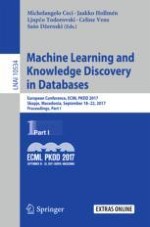2017 | OriginalPaper | Chapter
Sequence Generation with Target Attention
Authors : Yingce Xia, Fei Tian, Tao Qin, Nenghai Yu, Tie-Yan Liu
Published in: Machine Learning and Knowledge Discovery in Databases
Publisher: Springer International Publishing
Activate our intelligent search to find suitable subject content or patents.
Select sections of text to find matching patents with Artificial Intelligence. powered by
Select sections of text to find additional relevant content using AI-assisted search. powered by
